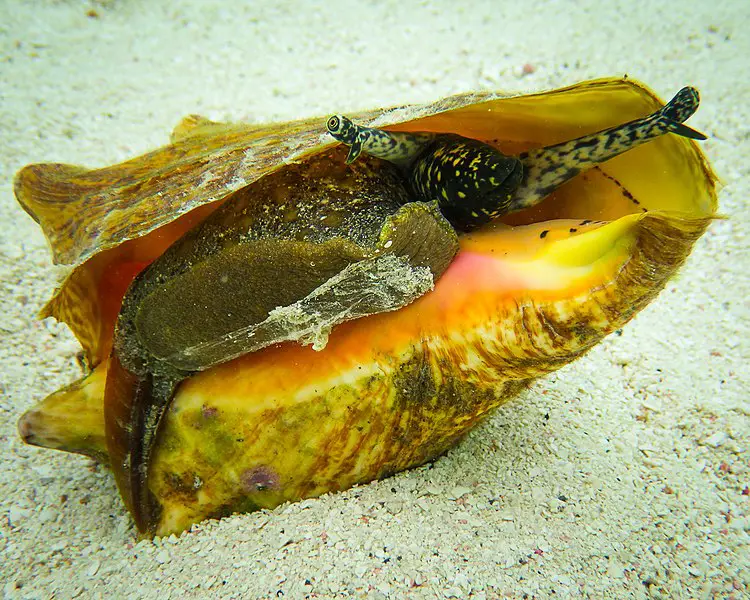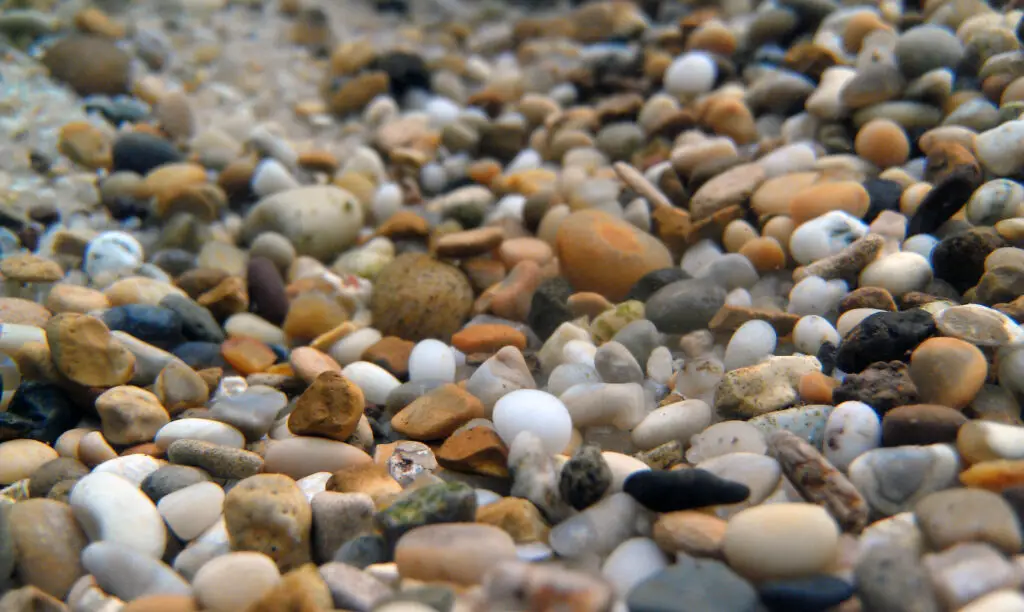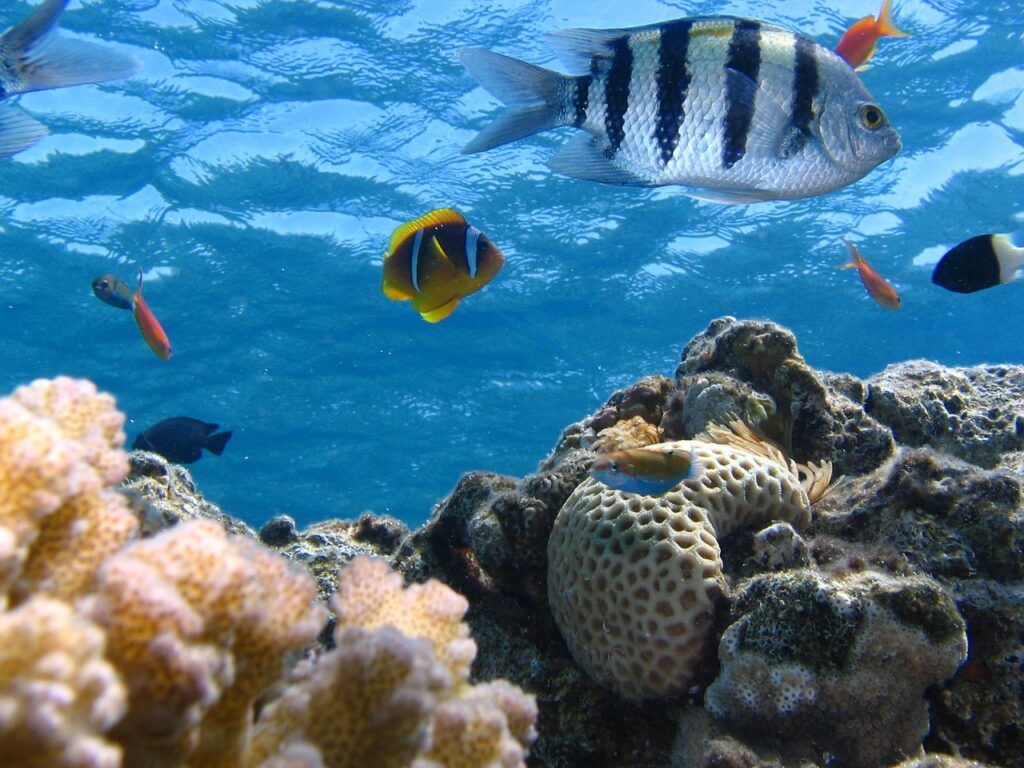Conchs are saltwater mollusks that live in the tropical waters of the Caribbean and the Western Atlantic Ocean. Unlike crustaceans, conchs have a soft body and a calcareous shell. Conchs are gastropods that are closely related to sea snails, welks, and abalone.
This article delves into the difference between mollusks and crustaceans and answers your questions about all things’ conch. We will cover the classification of mollusks in general, as well as crustaceans, gastropods, and Queen Conchs.
What is a Conch a mollusk or crustacean?
Conchs are mollusks. They belong to the phylum mollusca, “soft” in Latin. So, it is notable that conchs are not soft at all. Instead, they have an outer shell and their foot has a protective muscular membrane.
Broken down shells are important for substrate formation and help create healthy calcium deposits for coral reefs. Some mollusks, however, do not have shells at all.
Crustaceans are a completely different category of animal than mollusks. The phylum arthropod is the classification of crustaceans. Examples of crustaceans include crabs, shrimp, krill, lobsters, and crayfish.
Crustaceans have a segmented body with a hard exterior, jointed limbs, two pairs of antennae, and gills. They are not shellfish. Mollusks, including conchs, have very different anatomy and none of these defining features.
More close relatives of the conch are octopuses, squids, mussels, sea snails, abalone, scallops, and oysters. They are all mollusks and exhibit similar characteristics, like a body cavity, soft body, tentacles and compound eyes.
Mollusks could be found in marine or freshwater environments; they typically have a calcareous shell, but some, like slugs, do not.
2) What is a conch classified as?
A conch is classified as a mollusk. They are in the kingdom Animalia and the phylum Mollusca. However, their classification can be broken down even further into their subsequent class, superorder, order, suborder, infraorder, superfamily, family and genus. These names distinguish living things from one another by their defining characteristics.
The class of the conch is Gastropoda. The superorder is Caenogastropoda. The order is Sorbeoconcha. The suborder is Hypsogastropoda.
The infraorder is Littorinimorpha. Their superfamily is Stromboidia. Their family is strombidae. Lastly, their genus is Strombus, which is the most defining portion of their order, besides species which defines different types of conchs from one another.
Additionally, they are classified as shellfish. If one has a shellfish allergy, they should steer clear of conch. They can also be considered univalves, not bivalves like clams, scallops and oysters. Univalves have a shell which is made up of one single structure, instead of two separate hinged halves.
3) Is a Queen Conch a mollusk?
The Queen Conch is a type of conch, so it is considered a mollusk. Their species is Gigas. Queen Conchs are true conches, or strombidae, in the phylum mollusca, which contains over 100,000 other species.
Queen Conchs have large, external, unsegmented shells. Although they can be wrongly identified as welks, they are the most common type of conch found in North and South American waters.
Queen Conchs have a spiral shell and are typically gray, tan, or yellow on the outside. Their meaty foot will be gray or brown.
On the inside, the shells are glossy pink or orange. The main predators of Queen Conch are humans, as well as octopus, starfish, crustaceans, fish, sea turtles and sharks. The body of a Queen Conch can be withdrawn into the shell for protection.
These mollusks are found in warm, shallow water in coral reefs and in sandy substrate. Their range includes the Caribbean Sea, the Gulf of Mexico, and the tropical Western Atlantic coasts of North and South America.
Queen Conches are edible and are often served in coastal seafood restaurants. Additionally, their shells are valued as souvenirs and can be used to make jewelry and beads.
4) Is a conch a gastropod?
A conch is a gastropod. Gastropoda is used to define the class of animals including snails and slugs that live in freshwater, saltwater and on land.
The most important thing to remember here is that all gastropods are mollusks, but not all mollusks are gastropods. Other mollusks, like octopuses, squid, and cuttlefish, are not considered gastropods.
Conchs are classified as gastropods because they have a defined head, a mantle (aka shell), a muscular foot, and a twisted stomach which is enclosed in a mass of organs beneath the shell.
In the case of conchs, their meaty foot will remain external to the shell to crawl on the ocean floor, unless they are threatened by a predator. They will contract their foot back into their hard shell.
Conchs live in saltwater and are considered invertebrates. Invertebrates include all gastropods, and they do not have a backbone.
Other types of invertebrates are arthropods, insects, and jellyfish. Instead of a backbone, invertebrates will have an exoskeleton, like in the case of mollusks, or they may have no defined segments at all, like in the case of worms or sea anemones.
5) What type of creature is a gastropod?
Gastropods are a type of mollusk that has either an univalve shell or no shell. They have a distinct, sensory head and can be found in many habitats, in freshwater, salt water, or on land. Gastropods are the largest group of mollusks, with over 65,000 individual species. After a conch dies, hermit crabs can inhabit the empty shell to use as protection.
Examples of marine gastropods include conchs, welks, cowries, sea hares, nudibranchs, sea snails, and abalone. Freshwater gastropods are animals like freshwater snails.
There are over 5,000 species of freshwater snails that live in rivers, ponds, lakes, and streams. Land gastropods include land snails and slugs, which can use their muscular foot to climb up trees and rocks.
The name “gastropod” comes from a Latin origin. “Gastro” means stomach, while “pod” or “ped” means foot. The foot of a gastropod is unlike that of humans, although it is highly muscular and used for mobility.
Gastropods have a stomach which twists and turns around the internal organs and above the foot. Instead of being sedentary, like anemones, or hypermobile, like crabs, gastropods are slow moving.



